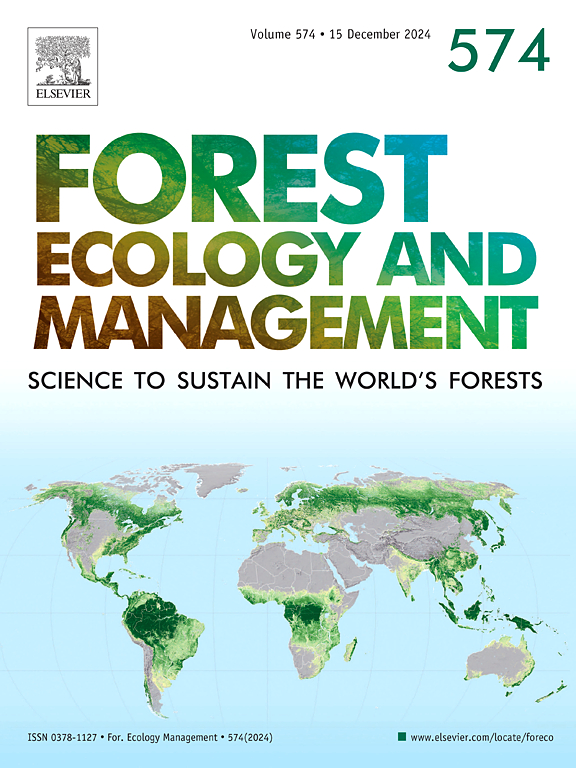Natural regeneration 18 years after experimental silvicultural treatments in Canadian boreal forests
IF 3.7
2区 农林科学
Q1 FORESTRY
引用次数: 0
Abstract
In Canada, clearcutting is the most widely used silvicultural system in boreal forests despite potential impacts on forest simplification and biodiversity loss. Retaining mature trees is suggested to maintain stand structure and biodiversity, especially for promoting the regeneration of shade-tolerant species. Partial harvesting is considered a promising alternative to the clearcutting system as a means of integrating ecological, economic, and social objectives into silvicultural planning; however, this approach must be developed for use in natural boreal forests. Here, we evaluate the effects of silvicultural treatments on natural regeneration in stands of natural even-aged mature black spruce (Picea mariana (Mill.) B.S.P.), 18 years after cutting. In 2003, in the Saguenay and North Shore regions of Quebec, an experimental design of fully randomized blocks was established across six sites, each containing two forest stand types (younger and older stands) and six silvicultural treatments. In 1 512 microplots, we categorized all tree seedlings by species and height class and assessed a dominant seedling for growth-related variables, and microenvironment. We found that 18 years after treatment, mini-strip shelterwood harvesting produced the highest black spruce seedling density (39 765 seedlings/ha). In contrast, clearcutting produced a seedling density that was three times lower than uniform shelterwood harvesting but demonstrated a twofold increase in seedling terminal shoot length growth. Mineral soil, spot scarification, moss cover with Polytrichum spp., and distance from residual strips positively correlated with black spruce seedling density. Our study highlights the potential of shelterwood systems as a silvicultural alternative to clearcutting for promoting black spruce regeneration in Canadian boreal forests.
求助全文
约1分钟内获得全文
求助全文
来源期刊

Forest Ecology and Management
农林科学-林学
CiteScore
7.50
自引率
10.80%
发文量
665
审稿时长
39 days
期刊介绍:
Forest Ecology and Management publishes scientific articles linking forest ecology with forest management, focusing on the application of biological, ecological and social knowledge to the management and conservation of plantations and natural forests. The scope of the journal includes all forest ecosystems of the world.
A peer-review process ensures the quality and international interest of the manuscripts accepted for publication. The journal encourages communication between scientists in disparate fields who share a common interest in ecology and forest management, bridging the gap between research workers and forest managers.
We encourage submission of papers that will have the strongest interest and value to the Journal''s international readership. Some key features of papers with strong interest include:
1. Clear connections between the ecology and management of forests;
2. Novel ideas or approaches to important challenges in forest ecology and management;
3. Studies that address a population of interest beyond the scale of single research sites, Three key points in the design of forest experiments, Forest Ecology and Management 255 (2008) 2022-2023);
4. Review Articles on timely, important topics. Authors are welcome to contact one of the editors to discuss the suitability of a potential review manuscript.
The Journal encourages proposals for special issues examining important areas of forest ecology and management. Potential guest editors should contact any of the Editors to begin discussions about topics, potential papers, and other details.
 求助内容:
求助内容: 应助结果提醒方式:
应助结果提醒方式:


